Stories
Margo Barton
1957-
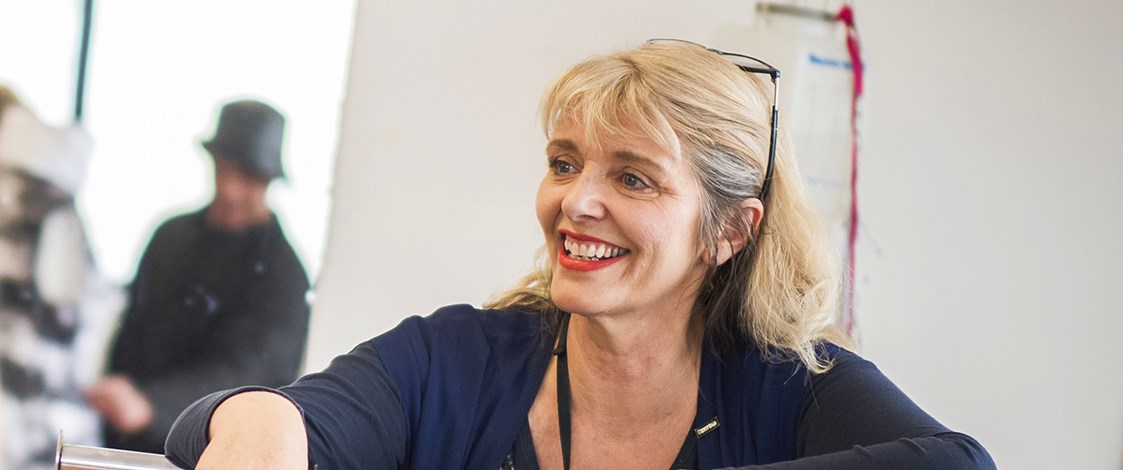
In a colourful fashion career spanning almost four decades, Margo Barton has worn many hats. Variously model, pattern-grader, designer, milliner and educator, she has participated in fashion across the spectrum and her expertise is recognised nationally and internationally.
Taught how to use a sewing machine at the age of 11, she made a beach dress out of two decorative tasselled towels. Other early examples of her innovative thinking were the long, yellow, stretch satin jersey t-shirt dress and long, green, Lurex singlet dress she designed to wear to her high school balls. Not exactly what was expected of a student at a conservative private girls’ school in Dunedin in the 1970s, but she carried it off.
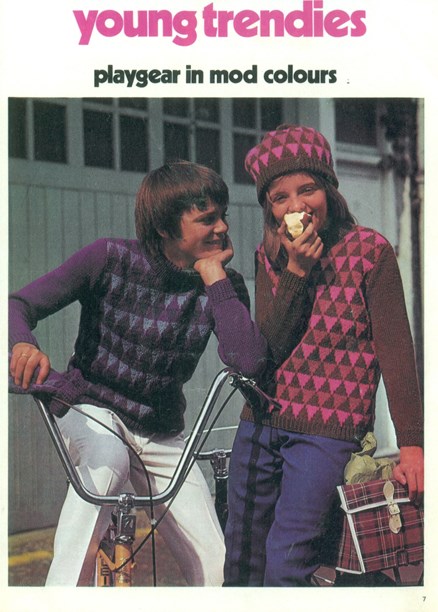
Margo Barton and her cousin Mark Barton modelling for a knitting-pattern book cover in 1967.
Although fashion seemed the obvious career choice, Margo’s teachers had other ideas. At the end of her 6th Form year, they quashed her hopes, advising her to enrol at secretarial college. She attended the college for just one week then went back to school to do her 7th Form year.
A visit to New York in 1977 strengthened her resolve to pursue her interest in fashion. The New York department stores and the fashion collections of two designers in particular – Yves Saint Laurent whose opulent Russian collection had just been launched and American designer Anne Klein, noted for her competitively priced, well-designed young lifestyle clothes – left a lasting impression.
Considering a Home Science degree to be a viable option, Margo enrolled as a student at the University of Otago. After one year, she discontinued her studies as she didn’t have the prerequisite science papers to continue.
A brief spell in Auckland followed, during which time Margo signed up as a model with the June Dally Watkins Deportment School and Model Agency. Because of her height and sculpted cheekbones, Maysie Bestall-Cohen, the agency’s owner, nicknamed her Verushka after the six-foot German model who came to fame internationally in the 1960s and to whom Margo bore a resemblance. Having modelled as a child in fashion parades at a Dunedin department store (payment for one show being a tartan umbrella) and as a teenager for Dunedin model agency Vanity Walk, Margo wasn’t new to the game. She had also been third runner-up in the Miss Otago contest.
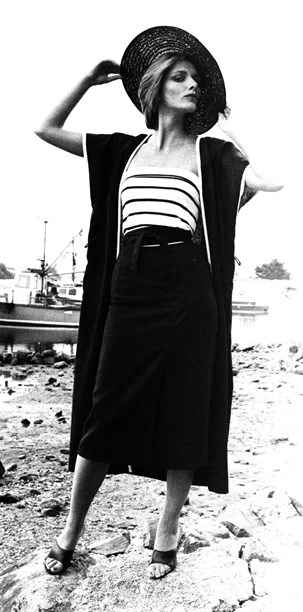
Margo Barton wearing Rosaria Hall separates and a vintage hat. Modelling portfolio 1979. Photographed at Karitane near Dunedin.
Being "a good clothes fit", as she puts it, was also an asset in her two-year stint as a pattern-grader at the Dunedin clothing manufacturing company Sew Hoy and Sons. When not grading patterns (scaling patterns to different sizes) she doubled as a house model for the firm.
Margo moved to Sydney in 1981. While registration with a Sydney fashion employment agency resulted in temporary placements, she realised that with the arrival of computers pattern-grading could become obsolete and she set her sights on becoming a designer. For the next three years she studied at top Sydney fashion school The Dress Design Studio, known today as the Fashion Design Studio.
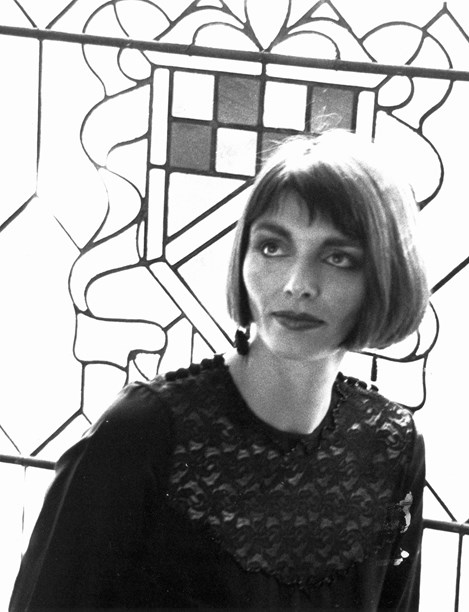
Margo Barton, photographed in Sydney, wearing a vintage dress. Modelling portfolio, 1982.
At Margo’s suggestion, a millinery component was introduced into the Studio’s curriculum. Her hat designs so impressed Dolly fashion editor Patricia Merk that she took the young New Zealander under her wing and commissioned her to create hats for that magazine’s fashion shoots and later for Cleo.
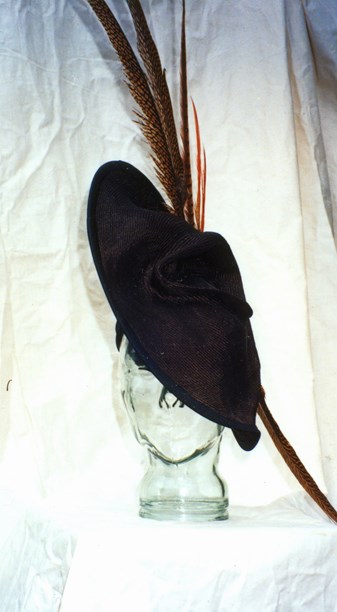
Brown parisisal straw hat with pheasant feather trim. Margo Barton Millinery, circa 2005.
After graduation, Margo worked as a designer for a company producing the Cruise and Midnight Cruise labels, also the Pierre Cardin label under licence, and she tutored part-time at the Dress Design Studio. In 1989, invited to be part of a promotion celebrating young Australian designers in Europe, she designed a collection of swimwear which was noted favourably by Galeries Lafayette in Paris and photographed for a fashion spread in Australian Vogue. Three of her swimwear designs also made the finals in the Benson & Hedges Fashion Design Awards in 1992.
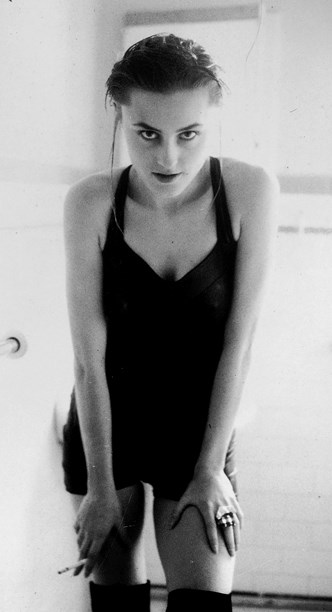
Cotton/Lycra boy-leg swimsuit by Margo Barton. Test shoot, Sydney 1989.
On her return to Dunedin later in 1989, Margo developed her own fashion line, "the kind of clothes I would wear myself", and sold it through selected stores. By 1992, she had switched exclusively to her first love, hats, and Margo Barton Millinery was born. In addition to designing and making hats for individual clients, she produced a line of ready-made hats and offered a re-trimming, re-blocking and re-stretching service. More street-smart than garden party-pretty, her millinery was stocked by shops with a similar design outlook such as Plume in Dunedin and Zambesi in Auckland. Working mainly with felt, leather, straw and feathers, she also experimented with Perspex, acrylic and other unusual materials.

Margo Barton printed acrylic bonnet Match, one of a collection of three – Hatch, Match, Dispatch – exhibited at the eCHO exhibition Brisbane 2003, re-eCHO Brisbane 2010, eCHO London 2003/2004, desire n Dunedin 2009.
Doris de Pont (DNA), Margarita Robertson (NOM*d), Donna Tulloch (Mild-Red) and Tanya Carlson were among the fashion designers who availed themselves of Margo’s hat-making skills.
In 1990, Margo began tutoring part-time in fashion drawing and fashion design at the Otago Polytechnic School of Design. When this evolved into a full-time position, she helped to develop the school’s fashion studies curriculum. When the diploma courses attained degree status, Margo was informed that she herself needed a Tertiary degree to continue teaching.
"I approached the School of Architecture and Design at RMIT (Royal Melbourne Institute of Technology) and asked them if they would take into consideration my considerable practical experience and allow me to go straight to a 'Master’s by project' and to work off-shore in New Zealand. They agreed. Even better, when I was close to finishing my Master’s, my project was up-graded to a PhD."
In 2012, Margo Barton completed her doctorate. Titled Sketching Millinery in Three Dimensions: A Journey Between Physical and Digital Spaces, it involved the use of animation and engineering-based software, rather than programs designed specifically for the fashion industry, to sketch and pattern-make 3D hats simultaneously.
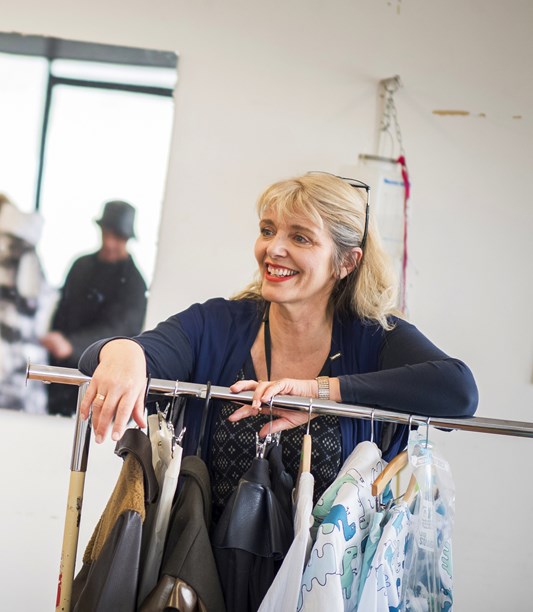
Margo Barton at Otago Polytechnic Design School, 2015.
Reaching the finals in the 1999 Mittelmoda Fashion Designer Awards in Italy, was another pivotal moment for Margo. Although her entry, a collaborative effort by herself (hats and shoes) and Dunedin designer Andrea Bentley (fashion) was unplaced, her participation in the event gave her the idea to set up a similar design competition in Dunedin. Developed through the auspices of the Otago Polytechnic School of Design, the iD International Emerging Designer Awards, held annually in conjunction with iD Dunedin Fashion Week since 2005, now attracts fashion graduates from all over the world.
Text by Cecilie Geary. Banner image of Margo Barton at Otago Polytechnic Design School, 2015. Image © Margo Barton.
Last published October 2016.